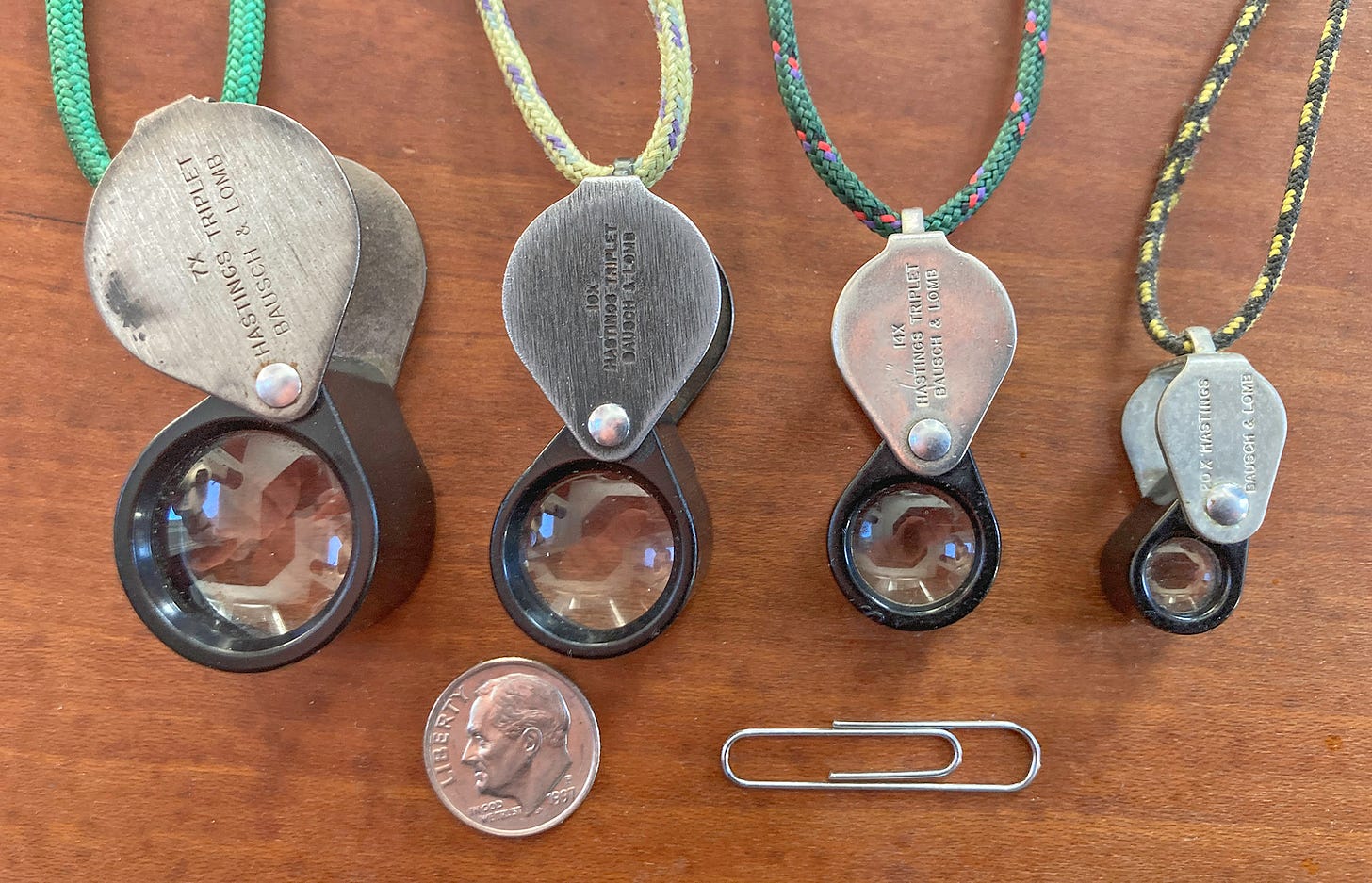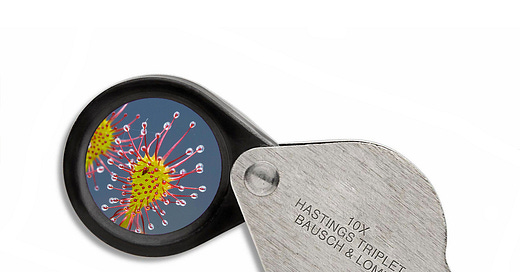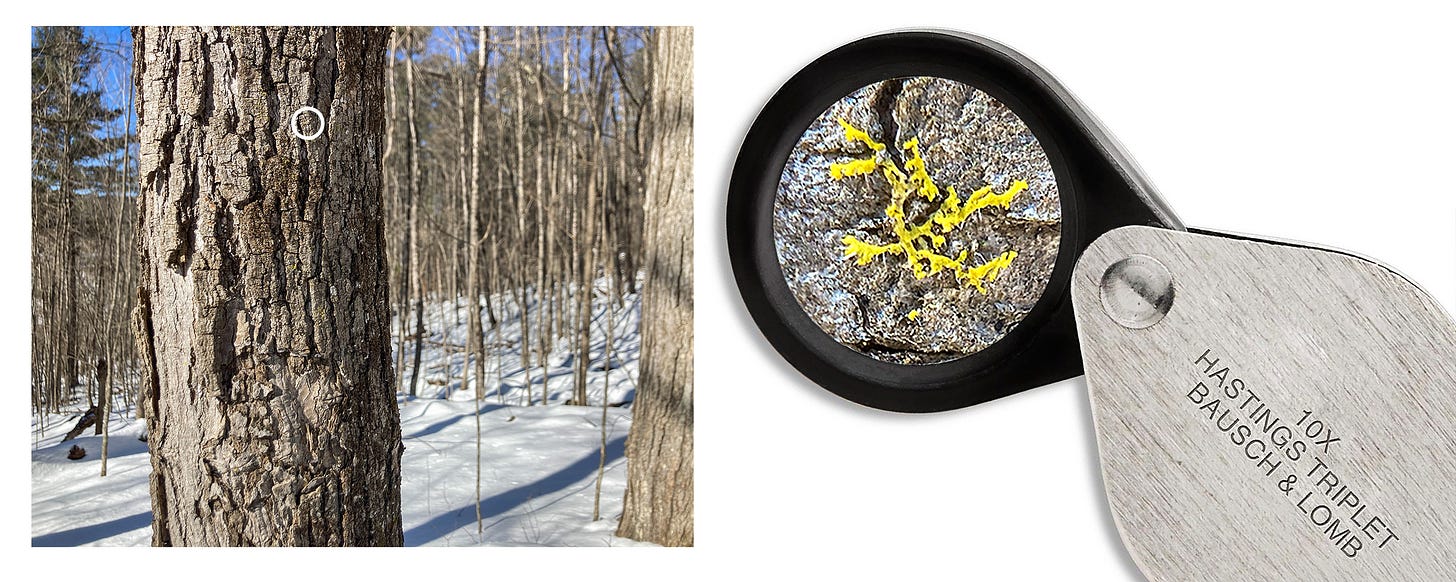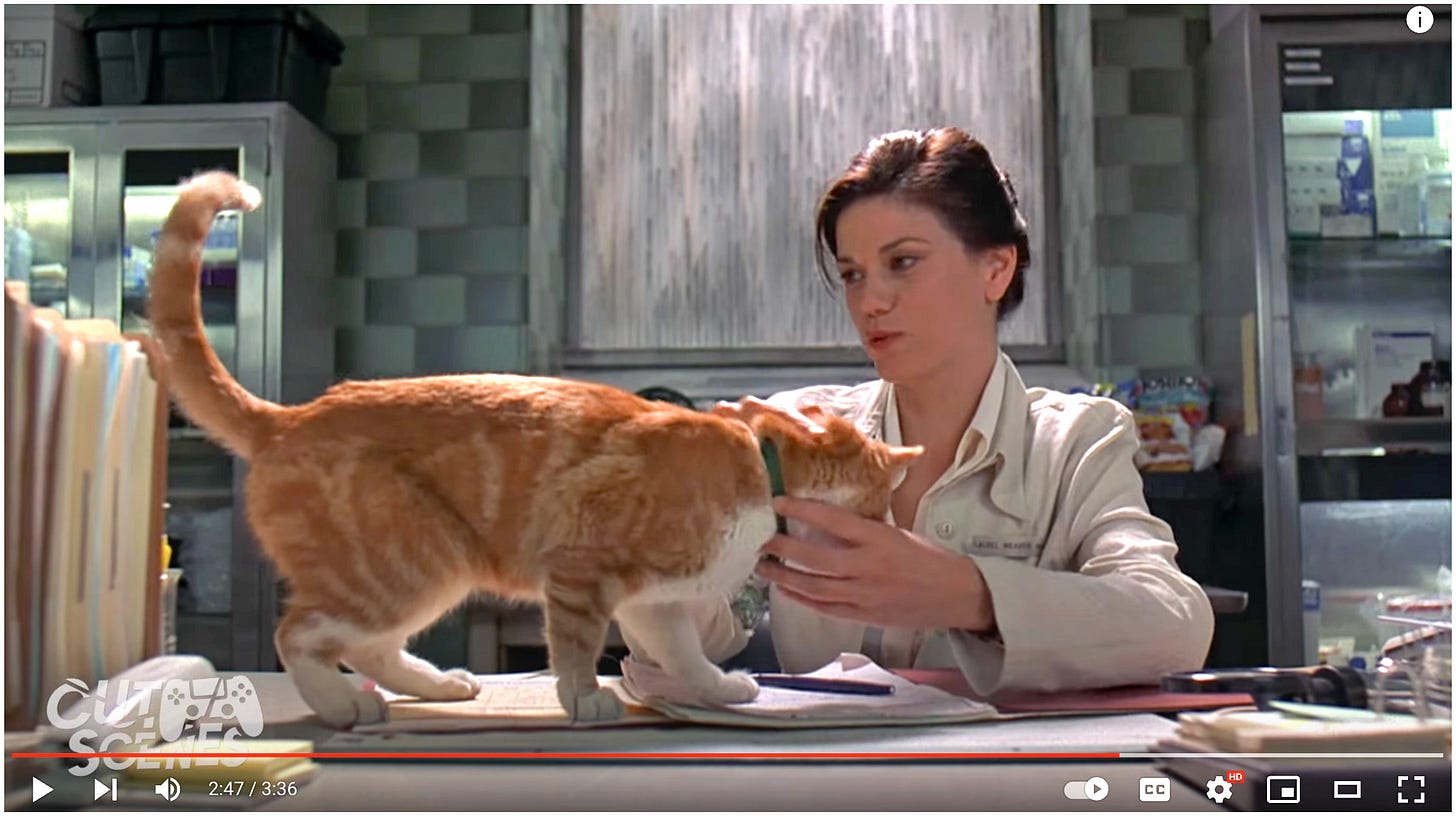DESPITE OUR IMMENSE and overwhelming presence here on Planet Earth, or maybe because of it, we humans seem universally drawn to things bigger than ourselves. Whales. The Grand Canyon. Giant Sequoias. Rainbows. The Heavens.
Bigger is better, we’re told. After all, how many of us get excited about “the next small thing” or a “really little deal?” Well, uh … I do. As it turns out, neither the heavens nor the humongous hold a monopoly on the exalted. It dwells as well within our grasp. See it for yourself through a lens — your hand lens.
More than a buyer’s guide to magnifiers for nature study and enjoyment, here for you is my brief homage to the tiny, an exhortation to slow your pace, to pause and breathe and journey through the looking glass — not necessarily for the strange and surreal, but for the small and sublime.
Rarely do I venture outdoors without my hand lens, sometimes called jeweler’s loupe. By any name, the hand lens makes the tiny visible and more meaningful. So please get one. And if you don’t want to think too much before you shop, and you can spring for roughly $35, I’ll make this simple: choose a 10x Bausch & Lomb Hastings Triplet. If you’d rather spend less money, fear not: many cheaper lenses will serve you well. (More on your options below.)
Although these lenses are essential tools for field naturalists and biologists, they’re also great for the curious among us, for anyone eager to explore more deeply the colors and patterns of a flower, the oddities growing on tree trunks, the crystals in the bedrock beneath your feet.
You may not use your lens as I do — to note whether a spruce twig has tiny hairs with swollen glands at the tip, for example, or to scrutinize the genitals of dragonflies and damselflies in order to be certain of their identities. (Yeah, I do a lot of that.) Even if you don’t go for that stuff, it is wonderful enough to use your lens to discover beauty and complexity too often overlooked even among the prosaic.
In my trio of images above — a sundew, a damselfly, a violet — I need not know their names. I only need oddity, texture, color, beauty, and most of all possibility. There’s that phrase: Give a guy a hammer, and everything starts to look like a nail. Well, give a person a hand lens, and everything starts to look like opportunity. So seize yours. (For the record, in that trio are Spatulate-leaved Sundew [Drosera intermedia], the face of a 1.25-inch-long damselfly called Scarlet Bluet [Enallagma pictum], and a Southern Coastal Violet [Viola septemloba].)
So how tiny are the dwellers of this kingdom? Very tiny. While wandering the woods behind my home the other day, I barely noticed a speck of yellow on a Sugar Maple whose trunk is about 8 inches in diameter at eye level. Only through my 10x lens could I appreciate the little patch of Candleflame Lichen (Candelaria concolor), which I have found nowhere else in those woods.
You and Your Lens
Before wrapping up with a few hand lens details for you (and a video clip from the movie Men in Black), two additional bits of advice:
These lenses are not for walking around, bending over, and peering at stuff like Sherlock Holmes. Instead, bring the lens up to your eye like a jeweler inspecting a diamond, which means you often hold in your other hand the little gift from nature — a flower, an insect, a seashell, whatever — and bring it close and into focus for your grand, intimate view. It helps a ton to have direct light on your subject. Take note of Josh and Steven (below) inspecting sedges in the genus Carex near the shore of James Bay, Quebec. Even though his face is shaded, Josh (standing) is allowing the low sunlight to illuminate the specimen in his left hand. Steven, holding his lens in his left hand and the sedge in his right, has shifted the brim of his cap sideways so that it does not shade his subject. Good lens technique all around!
Perhaps the best advice I can give you is this: Wear your lens on a cord or lanyard around your neck (see below); otherwise you will probably set it down somewhere and lose it.
Buying a Lens
I own hand lenses in all standard magnifications, each of which is a Bausch & Lomb Hastings Triplet. And I’ve informally consulted with colleagues in case I might have been wrong about my impressions.
7x — A lovely lens for wider views, but not the magnification necessary for most nature study. Lower magnification, however, might be more suitable for young children (as are off-the-shelf magnifying lenses with handles).
10x — This is the go-to magnification for botany, entomology, and most other ologies. Ten times bigger is most often all you need.
14x — Better for those of us looking at even tinier details in hand-held insect identification and certain botany applications.
20x — I don’t use mine much, although it’s good for viewing certain near-microscopic details (bryophytes and insects).
Do note that bigger magnification is not necessarily better. As magnification increases, the diameter of these lens decreases markedly. The 20-power lens, for example, is itself tiny and therefore harder to use (owing also in part to less depth-of-field at higher magnification).

Important: The Triplet and Your Budget
Many hand lenses are manufactured as either “triplets” (three stacked lenses that act as one) or as a single thick lens sometimes called a “Coddington.” Triplets offer the highest optical quality. Coddingtons are cheaper but the lens area — your field of view — is necessarily reduced by a black diaphragm ringing the lens. Bausch & Lomb manufactures its lenses in both versions — so if you want the better lens, be sure it is a Hastings Triplett.
If Bausch & Lomb optics aren’t your style, the BelOMO brand triplet lenses (similarly priced) are popular as well. I’m on the lookout for worthy budget lenses — if anyone has a suggestion please post it in comments below. Also of note is that the amazing Charley Eiseman still uses the cheap 10x lens he bought way back during grad school. So don’t sweat this too much — just get a decent lens.
Men in Black? (Really?)
To wrap up, if I haven’t expressed well enough my feelings for the Kingdom of Little Things, I offer you (with some trepidation) a clip from the movie Men in Black. To set this up, the Men in Black guys, in order to save the world, are searching for a galaxy. They literally shake a lead from a recalcitrant and grouchy Pug named Frank who begins the clip by telling us, “The galaxy is here!” (My point exactly.) “You humans, when you gonna learn that size doesn’t matter,” Frank continues. “Just ‘cause something’s important doesn’t mean it’s not very, very small.” (Yay! And I’ve read that no pug was harmed in the making of that movie.) The scene soon cuts to the medical examiner whose mundane evening is transformed once she herself discovers the galaxy on the belt (collar) of a house cat named Orion. Her rapt expression reminds me of what it’s like discovering our world through a hand lens. So roll the tape! » (In order to get you to the best and most relevant one minute of this longer clip, I had to link you off Substack — so that’s a screen-grab below, not a video link.)
Postscripts
Here below is an excellent video of ecologist John O’Rilley using his lens (in the rain). (My only amendment to the video would be not to look, as he says, “toward the light,” but to look up so that your subject is well-lit by direct light at your back— and not shaded by your our head or the brim of your cap if you wear one.)
Another (more formal) instructional video on lenses and using them from the University of California Master Gardeners of San Luis Obispo County.
Lots more information on all of the above from Penn State Extension.
Finally, because it would have been tough to photograph objects through an actual hand lens, my images here, as you might have already realized, are PhotoShop creations. But I hope you get the idea. The views really are great.









I have such a fondness for tiny things so I really enjoyed this ode to miniature beauty!
Thanks for this informative post.